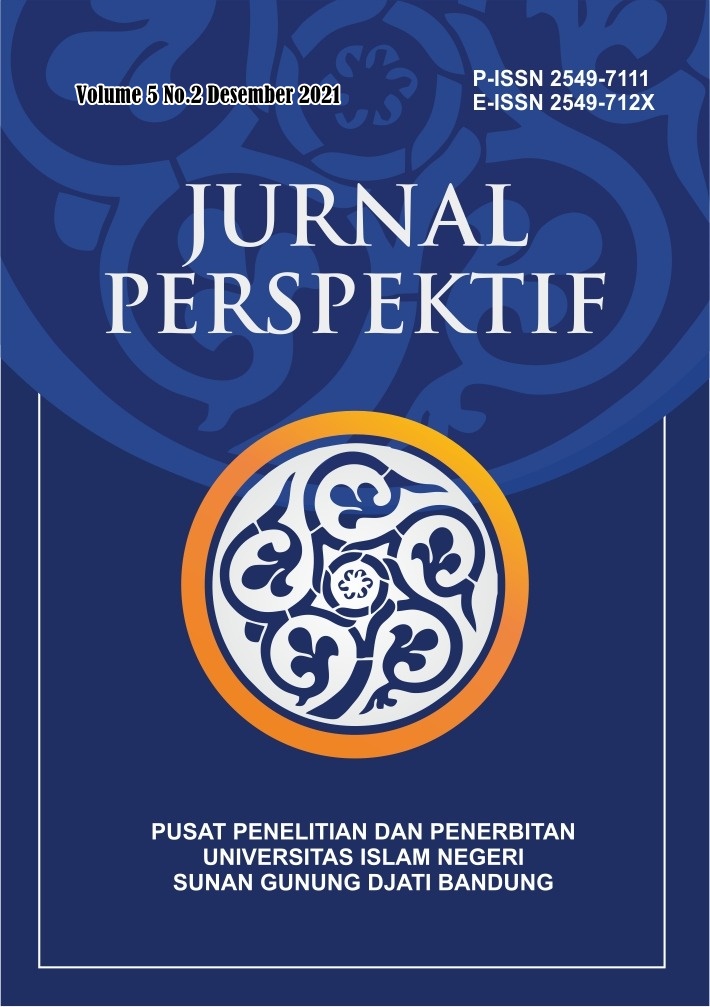PERKEMBANGAN MAZHAB SHOHABI DALAM ISLAM
DOI:
https://doi.org/10.15575/jp.v5i2.132Keywords:
Development, School, Shohabi, Islamic worldAbstract
The purpose of this study is to explain the development of the shohabi school in the Islamic world, as it is known that the Sahabai school is still a debate among scholars about its legality as a syar'i proposition, but until now there are still many cases whose sources refer to the shahabi school. This study uses a literature review, namely a study that focuses on literature review that is closely related to the development of the shohabi school in the Islamic world. The results of the study showed that the shohabi school was the opinion of friends about the law of a case after the death of the Prophet. The emergence of this school was due to the emergence of new cases after the death of the apostle which had never happened at the time of the Prophet Muhammad. The Shohabi school has developed along with the changing times. However, the shahabi school as a school that was born from friends who were not free from sin, so many people doubted it, but the virtue of this shahabi school is that it comes from friends who lived during the apostle's time and took part in resolving the case of the apostle's time by adhering to stick to the Qur'an and Sunnah. The recommendation from the results of this study is that the development of the dynamics of people's lives is in line with efforts to fulfill legal legality which can truly guarantee the survival of the community in the corridor of Islamic religious values, thus sources of law are absolutely necessary in people's lives as an effort to maintain harmonious life.
References
Abdad, M. Z. (2014). Ijtihad Umar Ibn Al khattãb: Telaah Sosio historis Atas Pemikiran Hukum Islam. Istinbath: Jurnal Hukum Islam IAIN Mataram, 13(1).
Arijulmanan. (2017). Dinamika Fiqh Islam Di Indonesia. Al Maslahah
Perkembangan Mazhab…
Jurnal Perspektif 218
Vol. 5 No. 2 Desember 2021
Jurnal Hukum Dan Pranata Sosial Islam, 403–422. jurnal.staialhidayahbogor.ac.id
Atmaja, F. K. (2017). Perkembangan Ushul Fiqh Dari Masa Ke Masa ( Development of Ushul Fiqh From Time to Time ). Mizan; Jurnal Imu Syariah, FAI Universitas Ibnu Khaldun (UIKA) Bogor, 5(1), 23–38.
Azhari, F. (2014). Perjalanan Ijtihad dalam Perkembangan Fikih. Syariah: Jurnal Hukum Dan Pemikiran, 14(1).
Febriani, N. A. (2012). Ra’yu Sebagai Sumber Hukum Islam. Al-’Adalah, 10(2), 377–392.
Hakim, A. (2018). Eksistensi Qaul Al-Shahabi Sebagai Dalil Syar’I. Jurnal Ilmiah Mizani: Wacana Hukum, Ekonomi Dan Keagamaan, 5(2), 37–48. https://doi.org/10.29300/mzn.v6i1.2199
Hakim, I. N. (2016). Pemikiran Ushul Fiqih Ibnu Qudamah: Kajian Atas Beberapa Masalah Fiqih Dalam Kitab Al-Kafi Fi Fiqh Al-Imam Ahmad Bin Hanbal. Al-Istinbath: Jurnal Hukum Islam, 1(1), 83–102.
Hamzah, A. (2016). Pengaruh Faktor-Faktor Sosial Terhadap Ijtihad Abu Bakar Al-Shiddiq. Islamika: Jurnal Ilmu-Ilmu Keislaman, 14(1).
Haroen, N. (2001). Ushul Fiqh I (cet. ke-3). Logos Wacana Ilmu.
Hidayatullah, K. (2017). Mazhab Ulama Dalam Memahami Maqashid Syari’ah. Ulul Albab: Jurnal Studi Dan Penelitian Hukum Islam, 1(1), 1–19. https://doi.org/10.30659/jua.v1i1.1971
Ismail, F. I. (2020). Ilmu Fikih: Sejarah, Tokoh, dan Mazhab Utama. Bahsun Ilmy: Jurnal Pendidikan Islam, 1(1), 73.
Khallaf. (2015). Ijtihad dalam syariat Islam. Pustaka Al-Kautsar.
Khallaf, A. W. (1978). ‘Ilmu Ushul al-Fiqh,: al-Nasr wa al-Tauzi.’
Mohd Kashim, M. I. A., Jamsari, E. A., Abul Hassan Ashari, M. Z., Samuri, M. A.-A., & Yaacob, S. E. (2012). Penentuan ciri negara
Sumirah…
Jurnal Perspektif 219
Vol. 5 No. 2 Desember 2021
Islam menurut pemikiran empat mazhab fiqh. Jurnal Hadhari, 4(2), 89–106.
Musa, M. Y. (2014). Pengantar Studi Fikih Islam. Pustaka Al Kautsar.
Nasri, N. (2019). Sains Sebagai Perluasan dari Islam. ISLAMIKA, 1(2), 102–115.
Nirwana, A., & Akhyar, S. (2020). Tafsir Ijtihad Shahabi. CV. Pena Persada. https://www.researchgate.net/publication/338765119_TAFSIR_IJTIHAD_SHAHABI
Ridwan, M. (2016). Menilik Rahasia Belajar Imam Madzhab. Misykah, 1(2), 202–227.
Sa, R. (2017). Pengantar Ilmu Ushul Fiqh. PT Kharisma Putra Utama.
Setiyanto, D. A. (2016). Pemikiran Hukum Islam Imam Malik Bin Anas (Pendekatan Sejarah Sosial). Al-Ahkam Jurnal Ilmu Syari’ah Dan Hukum, 2(2).
Sugiyono. (2016). Metode Penelitian Dan Pengembangan (Research and Development/R&D). Alfabeta. https://doi.org/10.1016/j.drudis.2010.11.005
Zayd, N. H. A. (1997). Imam Syafi’i; Moderatisme, Eklektisisme, Arabisme. LKIS PELANGI AKSARA.
Downloads
Published
How to Cite
Issue
Section
Citation Check
License
Authors who publish in Jourrnal Perspektif agree to the following terms:- Authors retain copyright and grant the journal right of first publication with the work simultaneously licensed under a Attribution-ShareAlike 4.0 International (CC BY-SA 4.0) License that allows others to share the work with an acknowledgment of the work's authorship and initial publication in this journal.
- Authors are able to enter into separate, additional contractual arrangements for the non-exclusive distribution of the journal's published version of the work (e.g., post it to an institutional repository or publish it in a book), with an acknowledgment of its initial publication in this journal.
- Authors are permitted and encouraged to post their work online (e.g., in institutional repositories or on their website) prior to and during the submission process, as it can lead to productive exchanges, as well as earlier and greater citation of published work (See The Effect of Open Access).




